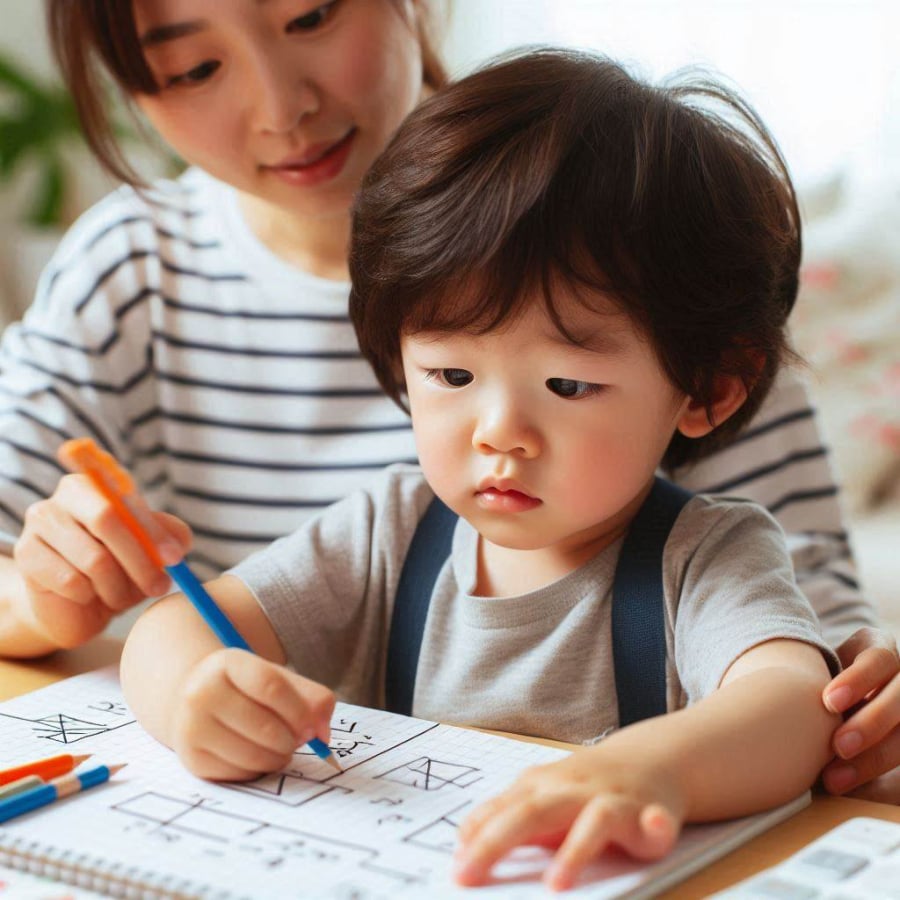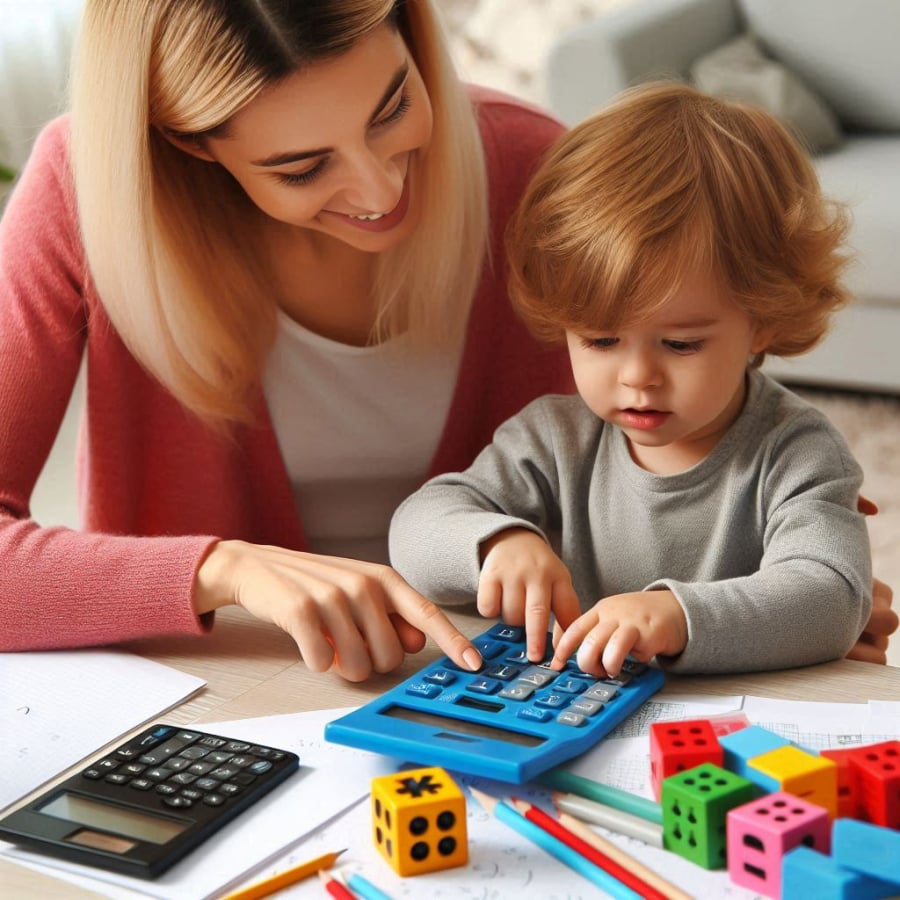There is a growing emphasis on enlightenment education among parents today. From the prenatal stage to preschool, guiding children to think and explore different aspects of life is essential to encourage their intellectual development.
In the past, math education was often associated with simple counting skills. Children who could count from 1 to 100 were typically praised by their parents.
However, real-world math goes beyond mere counting. Especially when children enter elementary school, math involves not only complex calculations but also creative thinking and flexible problem-solving abilities.
Hence, it is never too early to inspire mathematical thinking in children aged 2 to 6. Experts encourage parents to employ effective methods to develop their children’s mathematical thinking abilities.

Inspiring Mathematical Thinking in Young Children
What is Mathematical Thinking?
Mathematical thinking refers to the ability to apply mathematical concepts to analyze and solve problems flexibly. When children encounter situations that require problem-solving, this skill enables them to find efficient solutions.
To illustrate, consider the problem of finding the sum of numbers from 1 to 100. A traditional approach would be to add each number individually, but this method is time-consuming and prone to errors:
1 + 2 + 3 + 4 + … + 96 + 97 + 98 + 99 + 100 = ?
However, children can demonstrate mathematical thinking by recognizing the pattern in the number sequence. Instead of adding each number separately, they can utilize simpler methods, such as the formula for the sum of consecutive integers, to arrive at the answer quickly and accurately. Thus, mathematical thinking not only saves time but also fosters creative and logical thinking skills.
Encouraging the Development of Mathematical Thinking in Children
A crucial aspect of developing mathematical thinking is recognizing the relationships between numbers. To begin, children need opportunities to experience various mathematical skills, such as comparison, classification, graphing, spatial recognition, and sequencing. As they are exposed to diverse mathematical concepts, making connections and applying them in context will gradually foster logical thinking abilities.
Moreover, encouraging children to engage in math games, puzzles, and group activities is essential. These experiences not only allow children to practice and apply their knowledge but also develop their communication and collaboration skills, helping them understand math’s relevance in daily life.
Confidence in mathematical thinking opens up numerous opportunities for children in the future, enabling them to become more creative and effective problem solvers.

Mathematical Confidence Opens Doors to Future Opportunities
Teaching Math to Children at Different Ages
Ages 2-3
At ages 2-3, children first need to learn how to count sequentially. Gradually, they will understand the meaning and relationships between numbers and quantities.
Some effective teaching methods include:
– Counting the steps when climbing stairs.
– Encouraging children to help with retrieving items at home or in the supermarket.
– Playing finger-counting games, using all ten fingers to teach numbers from 1 to 10. Vary the finger-raising format to let children practice counting.
Ages 3-4
During this stage, children focus on learning to count and recognizing shapes, with more complex counting challenges.
– Teach children to count to larger numbers, up to 100, in sequence.
Introduce challenges with number jumps within the range of 10 and 20 (including odd, even, and multiple numbers).
– Play counting games: For example, ask them to pick the number that comes after a certain number.
– Engage in simple jigsaw puzzles or block-building games, such as building a house or arranging animals in order.
Ages 4-5
At this stage, children can be introduced to mathematical concepts such as comparison, classification, sequencing, and pattern recognition.
Teach children to compare quantities: “Which is more, 3 apples or 2 bananas? How many more apples are there?”
Encourage children to classify different types of fruits, such as apples and bananas.
Engage children in measurement games to help them understand length, height, weight, and clothing sizes. Facilitate their participation in diverse activities and games.
Ages 5-6
At ages 5-6, children can start developing their spatial thinking abilities.
Encourage children to draw maps of their route from home to kindergarten or during walks.
Teach children to draw diagrams of their house or school.
Promote the use of building blocks, play dough, or puzzles to enhance their spatial reasoning skills.
When playing with children, incorporate math-related items from daily life. Parents can also provide math puzzle books for shared exploration during leisure time. Through these activities, children will understand that math skills are applicable to solving everyday problems.






































